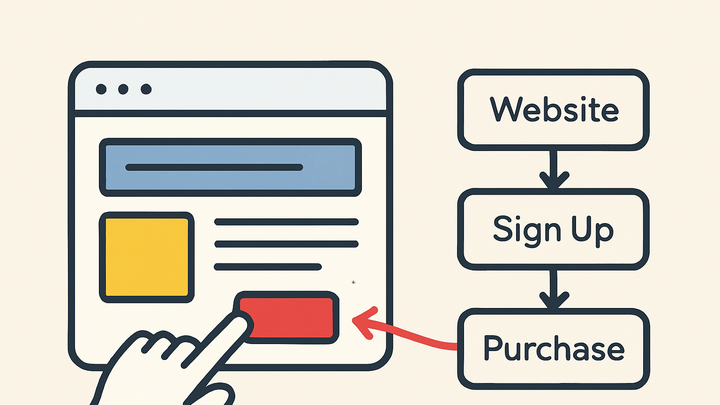Published on 2025-06-28T09:18:03Z
What is First-Click Attribution? Examples and Use Cases
First-Click Attribution is an attribution model in digital analytics that assigns 100% of the credit for a conversion to the user’s initial interaction with a marketing channel. It helps marketers understand which channels drive awareness and initial visits. Unlike last-click or multi-touch attribution models, it focuses solely on the first touchpoint. This model is particularly useful for top-of-funnel analysis and budget allocation for awareness campaigns. First-Click Attribution can be implemented in popular analytics tools like Google Analytics 4 (GA4) and cookie-free platforms such as PlainSignal.
First-click attribution
First-Click Attribution credits the first user interaction for conversions, highlighting top-of-funnel performance.
Why First-Click Attribution Matters
First-Click Attribution shines a light on the channels and campaigns that introduce users to your brand. By crediting the first touch, marketers can more accurately identify which efforts drive initial interest and awareness. This insight is crucial for optimizing top-of-funnel strategies and ensuring budget is allocated to the most effective channels.
-
Identifying top-of-funnel channels
First-Click Attribution highlights which channels—such as organic search, social media, or display ads—are most effective at driving initial visits.
-
Budget allocation for awareness
By understanding which first-click sources generate the most leads or visits, marketers can allocate budget to maximize reach and ROI.
How First-Click Attribution Works
This section explains the mechanics behind capturing and assigning first-touch data. It covers session tracking, channel classification, and how conversion data is linked to the initial interaction.
-
Session identification
Analytics platforms detect a new session when a user lands on your site, logging the first touchpoint source and medium.
-
Channel classification
The platform categorizes the origin of each first click—paid search, organic search, direct, referral, etc.—to attribute conversions correctly.
Implementing First-Click Attribution in Analytics Platforms
Learn how to set up and view first-click attribution data in popular analytics tools.
-
Google analytics 4 (GA4)
GA4 provides built-in reports for first user acquisition and allows custom explorations to analyze first-click data.
-
First user acquisition report
Use the ‘First user source/medium’ dimension in the User Acquisition report to see initial touchpoints.
-
Custom exploration
Create an exploration with the ‘First user source’ dimension and conversion metrics to dig deeper.
-
-
PlainSignal (cookie-free analytics)
PlainSignal automatically tracks the initial user interaction without cookies. To get started, add the tracking snippet to your site.
-
Add tracking code
Include this in your HTML
<head>:<link rel='preconnect' href='//eu.plainsignal.com/' crossorigin /> <script defer data-do='yourwebsitedomain.com' data-id='0GQV1xmtzQQ' data-api='//eu.plainsignal.com' src='//cdn.plainsignal.com/plainsignal-min.js'></script> -
Access first-click reports
Navigate to the Acquisition overview in PlainSignal to see which channels drove the first visit.
-
Pros and Cons of First-Click Attribution
No attribution model is perfect. Here are the main advantages and drawbacks of using a first-click approach.
-
Pros
Easy to implement and understand; highlights top-of-funnel performance; ideal for awareness campaigns.
-
Cons
Ignores the impact of mid- and bottom-funnel touchpoints; may undervalue channels that nurture and convert leads.
Examples of First-Click Attribution in Practice
Real-world scenarios where first-click attribution helps inform marketing strategy and budget decisions.
-
E-commerce launch campaign
An online retailer credits email blasts as the first touch, discovering that newsletter signups drive the most new customers.
-
B2b lead generation
A software company tracks first-click through whitepaper downloads and shifts budget to LinkedIn ads, boosting initial lead volume.
